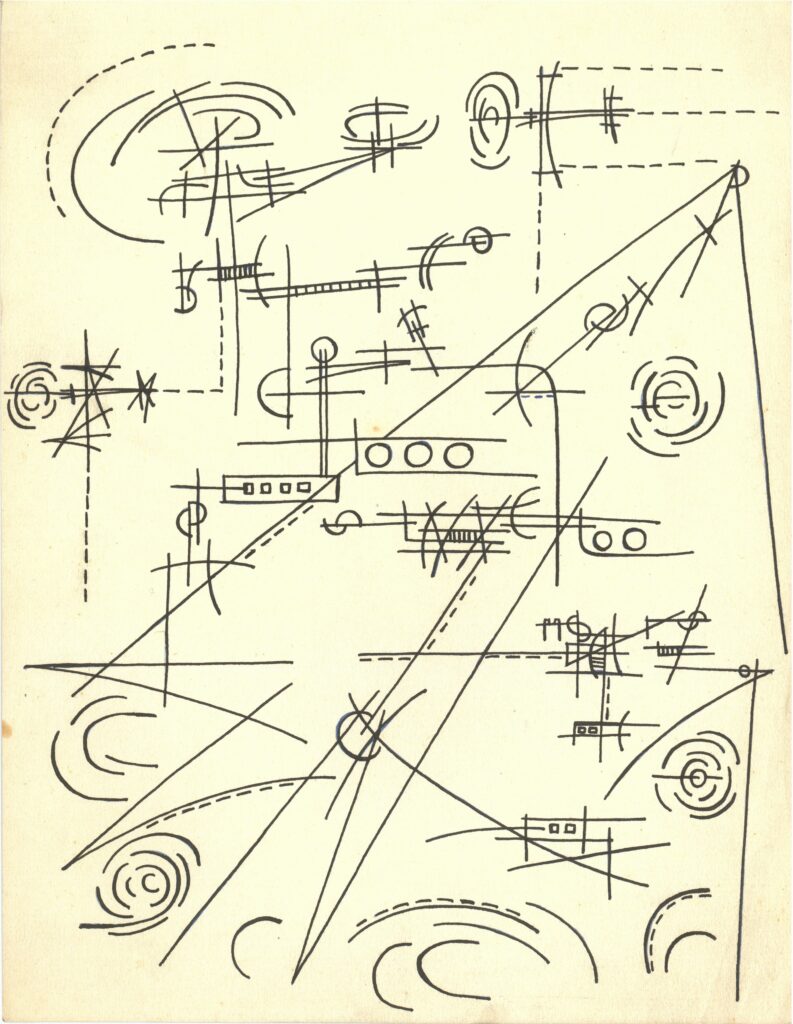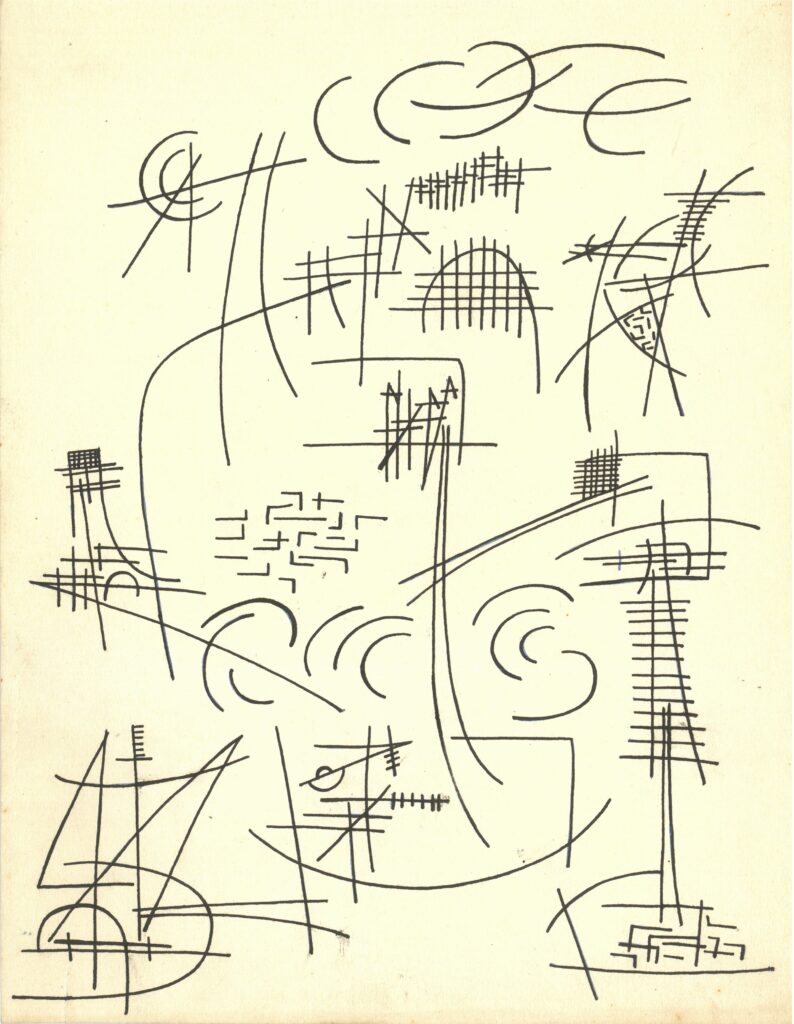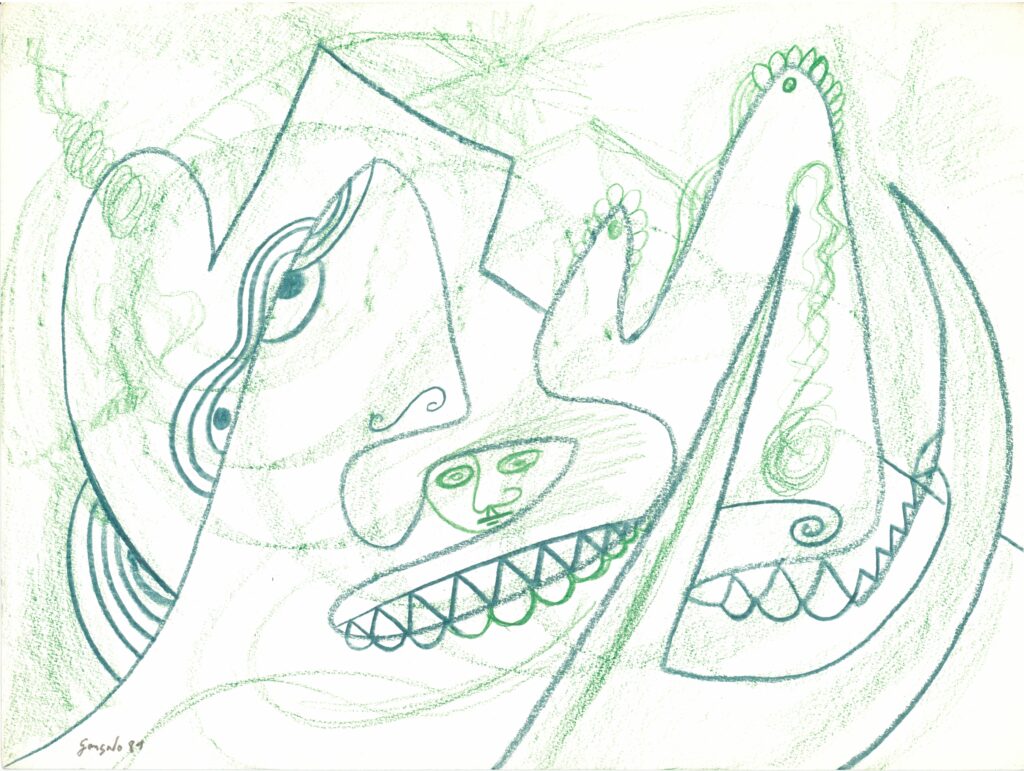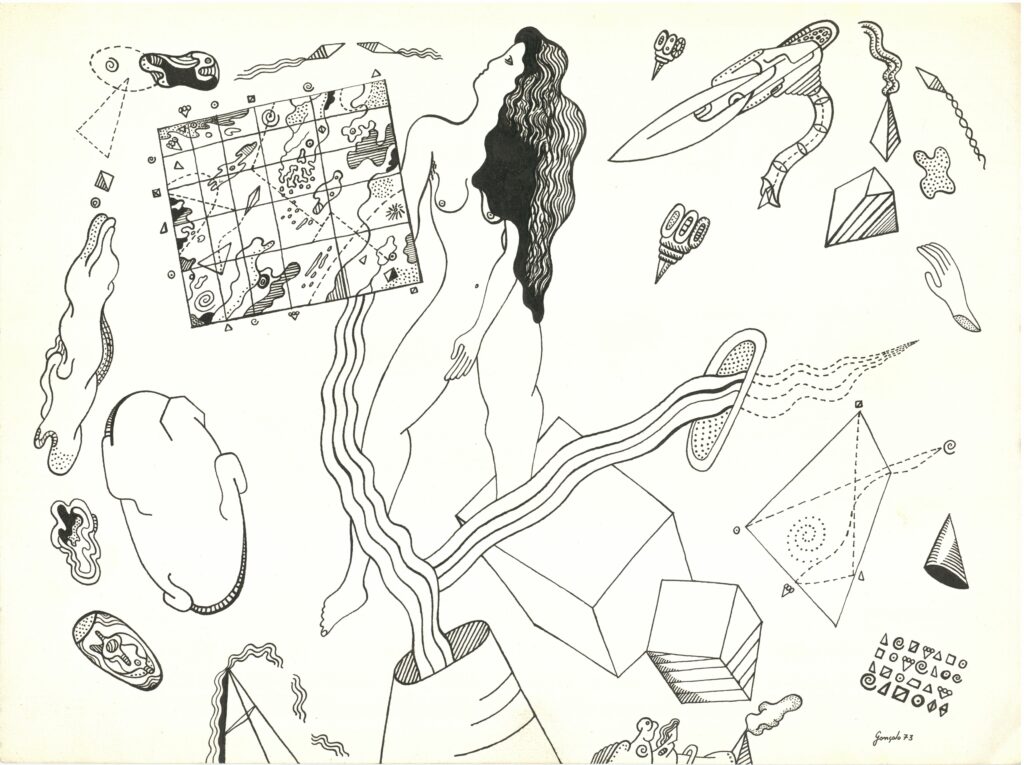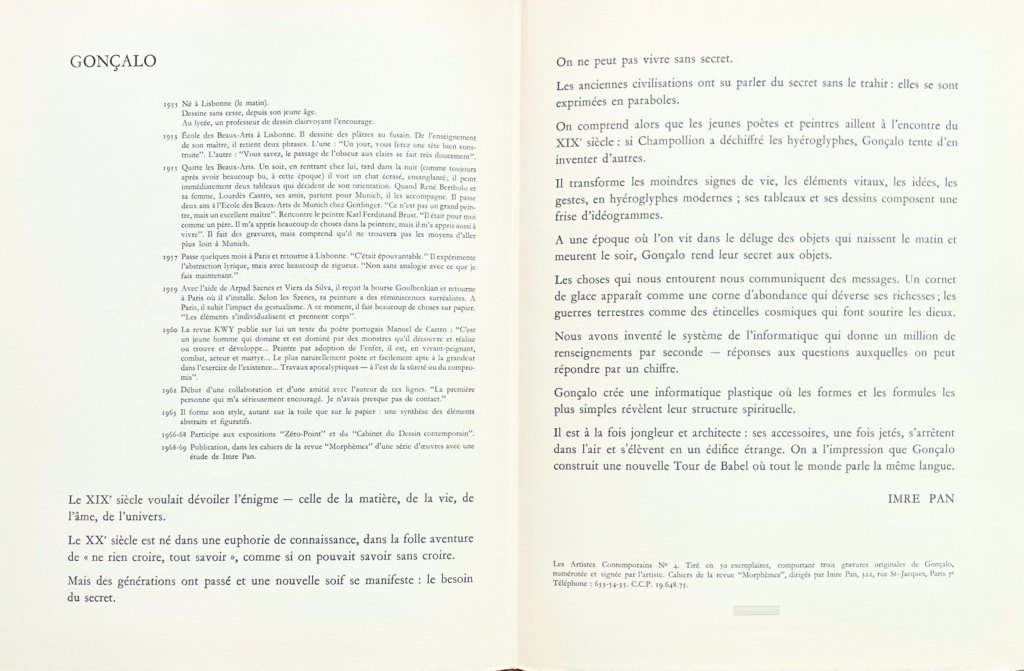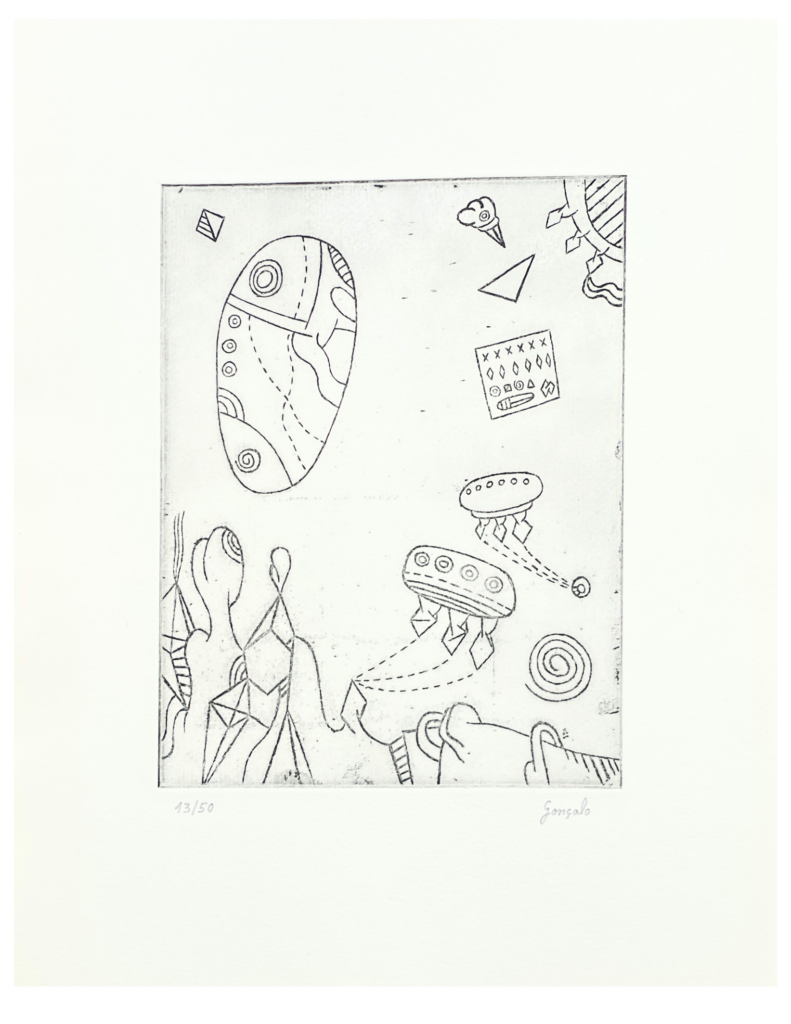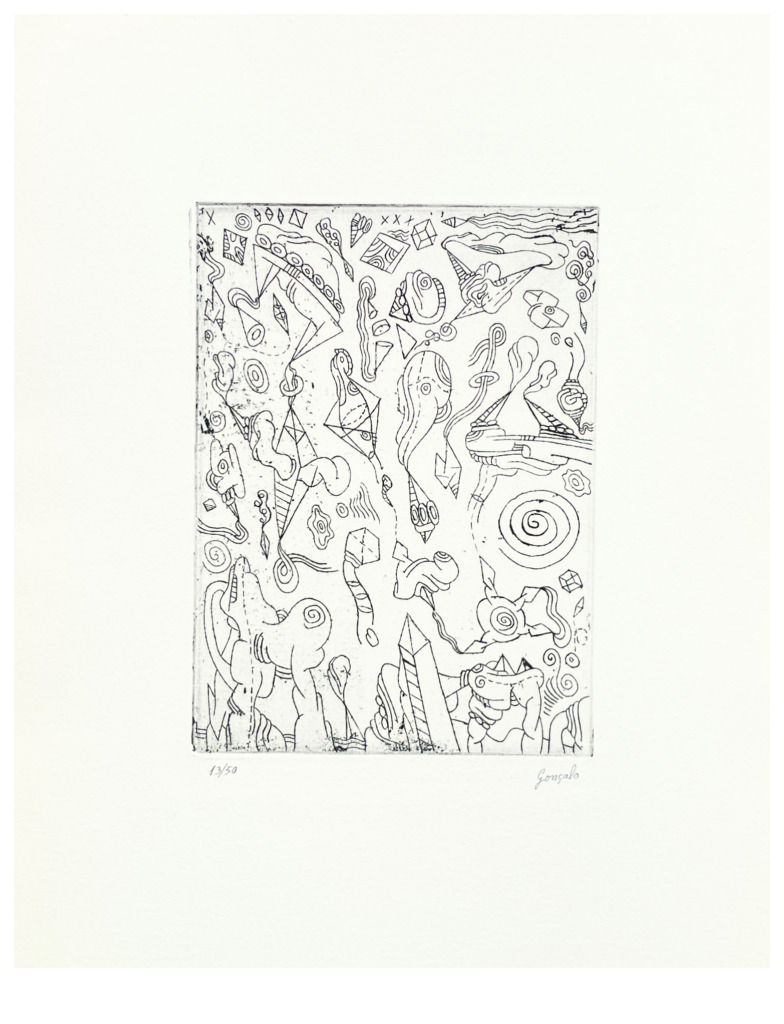Gonçalo Duarte – Hiéroglyphes modernes
28.03 — 19.04.2025
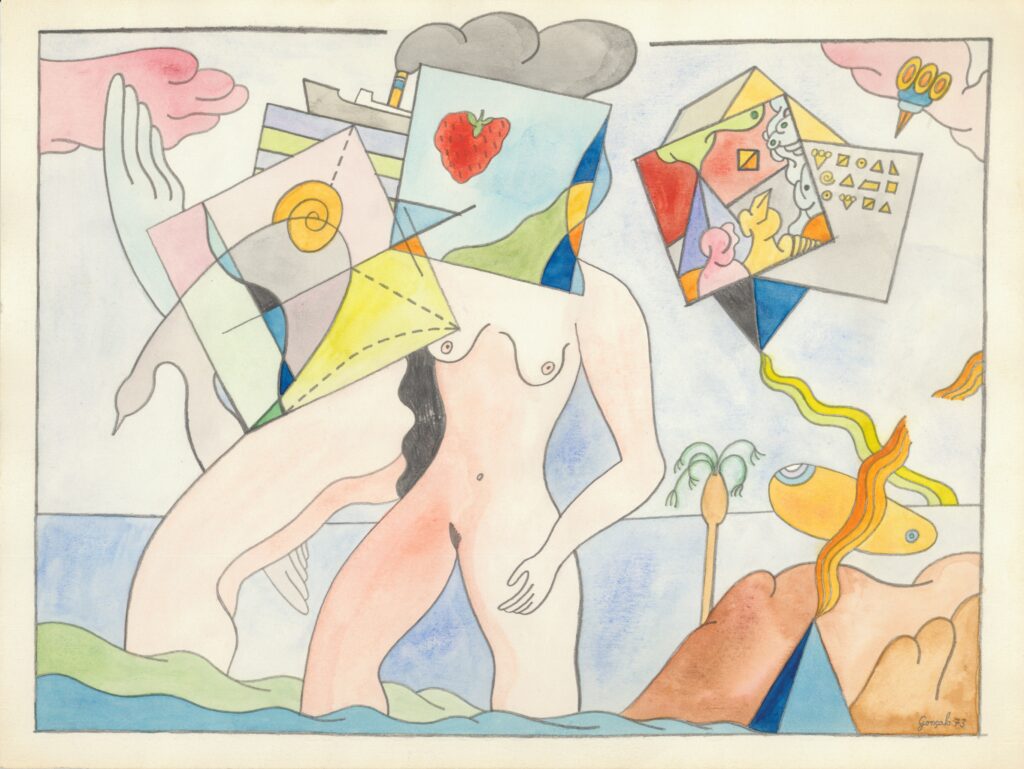
Gonçalo Duarte (1935 – 1986) belongs to that generation of Portuguese artists whose destiny was marked by dictatorship and exile. Like many of his compatriots, he felt an early desire to flee an Iberian Peninsula that was not conducive to the development of new ideas.
After studying at the Beaux-Arts in Lisbon, Duarte left Portugal in 1955 to continue his education in Munich with Lourdes Castro and René Bertholo. Two years later he moved to Paris, where he settled permanently in 1959, thanks to a Gulbenkian scholarship and the support of his friends Arpad Szenes and Maria Helena Vieira da Silva. When he returned to Lisbon briefly to exhibit his work, he confessed to feeling ‘out of place and immersed in an enormous solitude’ (letter to Imre Pán dated 13 April 1964).
In Paris, Duarte became a central member of the KWY group, to which Abraham & Wolff devoted an exhibition in October 2024 (Autour de KWY: 1958 – 1964, curated by Anne Bonnin). Initiated by Lourdes Castro and René Bertholo, KWY brought together young artists in exile: the Portuguese António Costa Pinheiro, José Escada, João Vieira and Gonçalo Duarte, the Bulgarian Christo and the German Jan Voss. Together they run the magazine of the same name, a composite art object made up of original serigraphs, photomontages, collages, postcards, poems and theoretical texts. Duarte’s contributions take the form of silkscreens, reflecting his interest in informal and lyrical abstraction.
In 1963, the artist started an important series of figurative canvases and drawings inspired by Surrealism. In them, he used a repertoire of obsessive motifs composed of snakes, eggs, smoking chimneys, changing bodies and female figures, cubes and pyramids, spaceships and ships. All these elements and symbols collide to form rebus whose solution eludes us, as in a dream. As the artist himself puts it: ‘Painting or drawing is to give concrete form, step by step, to a dream’. These reveries led the Hungarian critic and intellectual Imre Pán, whose interest in KWY manifested itself in several editions dedicated to the members of the group, to say that Duarte ‘transforms the smallest signs of life, vital elements, ideas and gestures into modern hieroglyphs. […] He is both juggler and architect: his props, once thrown, stop in mid-air and rise into a strange edifice. You get the impression that Gonçalo is building a new Tower of Babel where everyone speaks the same language” (Imre Pán, Morphèmes, Paris, 1968).
Abraham & Wolff is pleased to be exhibiting a previously unseen group of drawings by Gonçalo Duarte covering the period from 1961 to 1981. Hyéroglyphes modernes provides an insight into the artist’s development from abstraction to these highly personal dreamlike compositions.
We would like to express our warmest thanks to Garance Duarte for opening up her father’s archives to us, and to Sophie Pán for her generous support.
